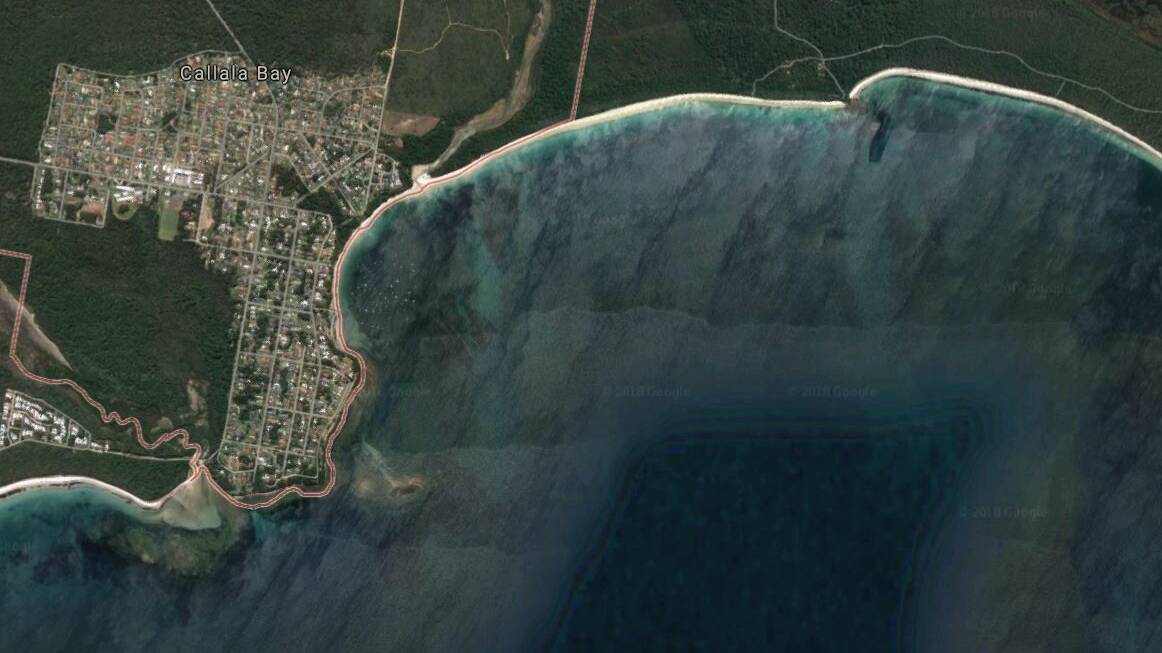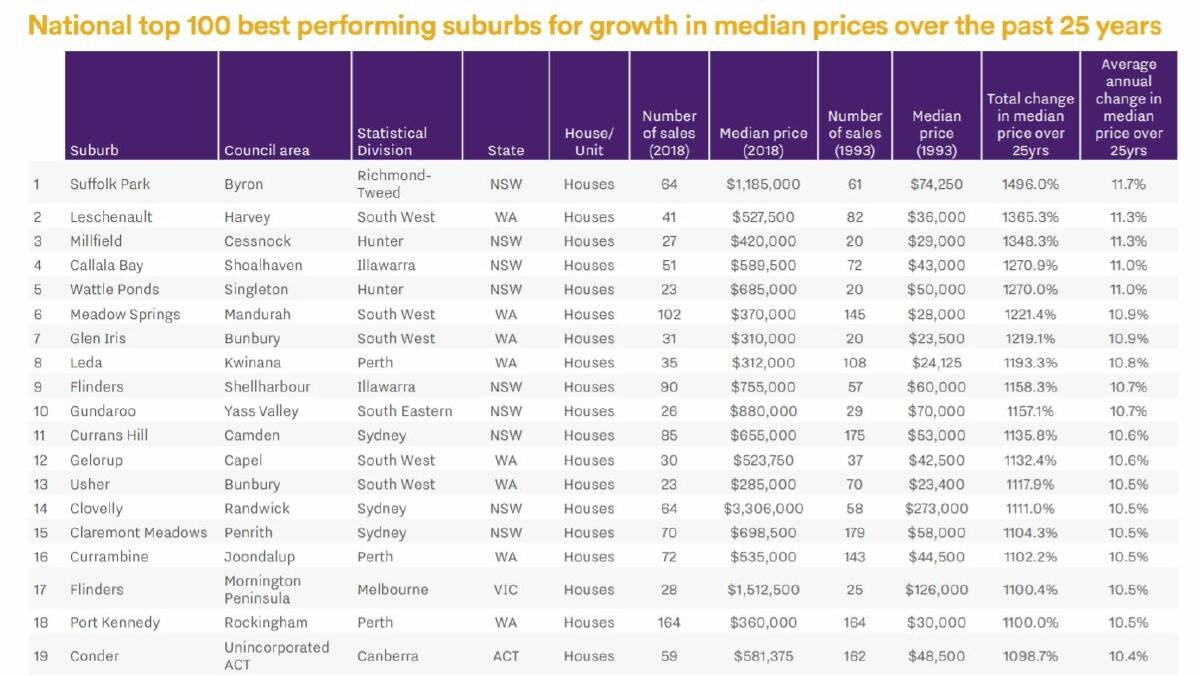
Callala Bay has been named as one of the country’s top suburbs for property value growth in the past 25 years.
Subscribe now for unlimited access.
or signup to continue reading
A study conducted by CoreLogic has identified the best performing suburbs for price growth over the past 25 years, based on change in median prices between 1993 and 2018.
Callala Bay came in at number four on the national list, following substantial growth in property prices, and number one on the Illawarra listing.
According to the ‘25 Years of Housing Trends’ report, 51 homes have been sold in Callala Bay so far this year at a median price of $589,500. In 1993, 72 homes were sold at a median price of $43,000, which indicates an annual change of 11 per cent.
Callala Bay’s annual growth rate of 11 per cent was well above Sydney’s average growth rate of 7.6 per cent.
The joint study by Aussie Home Loans and CoreLogic also revealed the top 20 suburbs in the Illawarra region, incorporating median prices for suburbs from the Illawarra, Shellharbour, Kiama, Shoalhaven and Wingecarribee local government areas.
Tomerong, St Georges Basin and Currarong made the top 20 in the Illawarra.
Twenty-seven homes have been sold in Tomerong so far in 2018 at a median price of $665,000, compared to 38 homes in 1993 at a median price of $73,000 a growth rate of 9.2 per cent.

In St Georges Basin 75 homes have been sold in 2018, for a median price of $485,000 compared to 58 homes in 1993 for a median price of $53,500.
The median price in Currarong at the moment is $750,000, a stark contrast to the average price of $110,000 in 1993.
“Our report clearly shows that housing continues to grow as Australia’s largest asset class, with the typical home owner showing average dollar growth in their investment at $18,400 a year over the last quarter-century,” Aussie CEO James Symond said.
Despite the growth in housing prices, Mr Symond said mortgage rates were close to “record lows”.
“Mortgage sizes have increased roughly in line with property values, up 376 per cent or 6.4 per cent per annum,” he said.
“With mortgage rates close to historic lows, loan serviceability levels have improved, however housing affordability remains a major challenge,” he said.
According to Aussie, the proportion of annual household income required to service a mortgage (based on a 20 per cent deposit) is currently tracking at 36 per cent, up from 27 per cent in 2001 (when serviceability data began) but down from its peak of 51 per cent of annual income in June 2008.
“Housing affordability will remain a major issue for many Australians, largely driven by the dramatic housing price growth in recent years, particularly in Melbourne and Sydney,” Mr Symond said.


